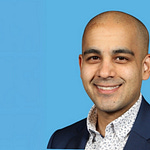Note: For this episode, I asked ChatGPT to write a summary based on the transcript of our conversation. I enjoy doing these interviews and consider myself a decent writer. However, it takes a lot of time each week to write a summary that I find minimally satisfying and acceptable. You deserve better and I can put my efforts to better use elsewhere or upgrading the whole experience here. I did lightly edit this to make it sound as if I could have written it. This is my second attempt following some feedback from a respected colleague (you know who you are). I’m beginning to see how my own style differs from ChatGPT, even if what it produces is perfectly readable, but somewhat less memorable. Let me know what you think in the comments.
Miranda Lipton is a talented freelance writer, photographer, and multimedia storyteller. In this episode we talked about earned media from a freelancer's perspective, focusing on how companies can collaborate with freelancers to get their stories published in widely read publications. Our discussion centered around Miranda's recent success in securing a feature in Fast Company about cultivated meat from fish. Our conversation should be enlightening for both freelancers and the companies that work with them.
Miranda's Journey into Freelance Writing
Miranda journey into freelance writing began in high school, and continued at the local town newspaper, a path that eventually led her to major in journalism at Ohio State University. Her desire to explore different facets of storytelling, including writing and photography, drove her to the freelance world.
The Genesis of the Lab-Grown Fish Story
Miranda's fascination with food sustainability and innovation in the past few years led her to investigate the idea lab-grown fish. The idea for the article emerged from a deep dive into the world of lab-grown meat, a concept that had been around for nearly a decade. Miranda recognized a gap in coverage, particularly in the realm of lab-grown fish, which was an emerging and innovative field. This, combined with her passion for food sustainability, created the perfect recipe (ChatGPT made a pun!) for a compelling story. She did her research and interviewed folks at relevant companies, eventually leading to the publication of her story in Fast Company.
The Art of Pitching to Publications
I was curious about the pitch process. How did she get an articled idea accepted at Fast Company? She utilizes a consistent pitch outline, typically comprising two to three paragraphs that encapsulate the essence of the story. Miranda stressed the importance of familiarity with the publication's focus. In her case, she had been an avid reader of Fast Company for years, allowing her to confidently identify the magazine as an ideal platform for her lab-grown fish story. .
Navigating Interviews with Companies
While pitching to publications can be challenging, arranging interviews is more straightforward. Companies are generally eager to discuss their work. Her process involves reaching out to individuals at relevant companies, often beginning with CEOs or co-founders identified through LinkedIn. Of course, it’s important to gather a diverse range of perspectives to provide a well-rounded view of the subject.
Feedback and Challenges
I asked her if she had gotten any feedback. While direct feedback from readers is not common, she occasionally receives emails from individuals who have read her articles. The overarching response to her articles on topics like lab-grown and 3D-printed food often revolves around skepticism and the novelty of the subjects. Many readers express interest in these innovations as well as uncertainty about trying them. The unfamiliarity of concepts such as 3D-printed food explains their hesitation. She thinks that as research in these fields progresses, more people will embrace these innovations. I have similar feelings of hesitation. I did an episode several years ago on the SDBN podcast.
Guidance for Companies Seeking Media Coverage
For companies without extensive PR resources, it is still possible to secure media coverage. Miranda recommended using platforms like Muck Rack to connect with journalists directly. The key is to reach out to journalists who cover topics relevant to the company's work. Tailored and timely pitches can catch a journalist's attention and pave the way for a mutually beneficial collaboration.
Collaborating with Freelancers
To get the writer’s attention and interest, you need a story with a clear angle and a sense of timeliness. Timeliness is one of the most critical factors. A story needs to be relevant in the current moment or have enduring relevance. Other elements, such as impact, prominence, proximity, and oddity, can also contribute to making a story compelling and newsworthy.
Understanding the freelance writer's perspective and the dynamics of storytelling can be instrumental in building successful media relationships and getting your stories into the limelight.
Your deepest insights are your best branding. I’d love to help you share them. Chat with me about custom content for your life science brand. Or visit my website.













